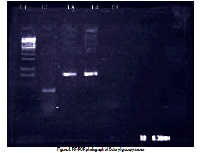ANTIOXIDANT AND ANTICANCER STUDIES OF CHLOROFORM EXTRACT OF MORINDA PUBESCENS LEAF
Keywords:
DPPH, MTT, Octonyl glucopyranose, antioxidant, caspases, Morinda pubescensAbstract
Morinda pubescens is used for the treatment of diabetes, liver diseases, wound healing, cancer etc and this study was aimed to screen the chloroform extract of Morinda pubescens leaves for biologically active compounds and to evaluate the antioxidant and anticancer potential against HepG2 cell lines. The antioxidant activity of extract and its isolated compounds were carried out using 2, 2 diphenyl-1-picrylhydrazyl assay using L- ascorbic acid as a standard. The tetrazolium salt 3-[4, 5 dimethylthiazol-2yl]-2,5diphenyl trazolium bromide was used to determine the cell viability against HepG2 cells and Caspase-3 and -9 carried out to find the mechanism of the cytotoxicity. Octonyl glucopyranose, the isolated bioactive compound was subjected to RT-PCR study to confirm the apoptotic activity. The results revealed that the chloroform extract and three isolated compounds namely phytol, Octonyl glucopyranose and hexonyl glucopyranose exhibited significant antioxidant activities with IC50 values of 550, 758, 482 and 645μg/mL respectively. The Octonyl glucopyranose one of the isolated bioactive compounds decreased the cell viability in HepG2 cells dose-dependently and increased the caspase-3 and caspase-9 protein levels to 1.3 folds than the normal cells. Augmentation of p53 expression was observed in the Octonyl glucopyranose treated cells than the untreated cells. These findings might offer valuable insights into the mechanism of anti-cancer activity of Octonyl glucopyranose HepG2 cells.
References
Ha K.T., Yoon, S.J., Choi, D. Y., Kim, D. W., kim, J.K., Kim, C.H. Protective effects of Lycium chinense fruit on carbon tetrachloride-induced hepatotoxicity. J Ethnopharmacol. 2010;96:529-535
-------------------------------------------------------------------------------------------------
Thomas, M. B. Zhu, A. M., Hepatocellular carcinoma: the need for progress. J Clin Oncol 2005;23:2892-2899.
-------------------------------------------------------------------------------------------------
Girish S. Achliya, Sudhir G. Wadodkar, Avinash K. Dorle. Evaluation of Hepato protective effect of Amalkadi Ghrita against carbon tetrachloride-induced hepatic damage in rats. J ethnopharmacol. 2004;90: 229-232.
-------------------------------------------------------------------------------------------------
Venkatesh Atul Bhattaram, Ulrike Graefe,Claudia Kohlert, Markus Veit, and Hartmut Derendorf. Pharmacokinetics and Bioavailability of Herbal Medicinal Products. Phytomedicine. 2002; 9:1–33
------------------------------------------------------------------------------------------------------------
Ayyanar M, Ignacimuthu, S. Herbal medicines for wound healing among tribal people in Southern India: Ethnobotanical and Scientific evidences. International Journal of Applied Research in Natural Products.2009; 2: 29-42.
------------------------------------------------------------------------------------------------
Medicinal plant diversity of Sitamata wild life sancturary, Rajastan, India. Anita jain, S.S. Katewa, P.K. Galav, Pallavi Sharma. J ethnopharmacol 2005;102: 143-157
------------------------------------------------------------------------------------------------
Thitiporn Anekpankul, Motonobu Goto, Mitsuru Sasaki, Prasert Pavasant, Artiwan Shotipruk . Extraction of anti-cancer damnacanthal from roots of Morinda citrifolia by subcritical water. Sep Purif Technol 2007; 55: 343–349.
------------------------------------------------------------------------------------------------
P. Vitaglione, F. Morisco, N. Caporaso V. Fogliano., Dietary antioxidant compounds and liver health. Crit. Rev. Food Sci. Nutr. 2004;44: 575–586
------------------------------------------------------------------------------------------------
Sucrose regulated enhanced induction of anthraquinone, phenolics, flavonoids biosynthesis and activities of antioxidant enzymes in adventitious root suspension cultures of Morinda citrifolia (L.). Baque MA, Elgirban A, Lee EJ, Paek KY. Acta Physiol Plant 2011. doi:10.1007/s11738-011-0837-2.
------------------------------------------------------------------------------------------------
Akihisa, T., Matsumoto, K., Tokuda, H., Yasukawa, K., Seino, K., Nakamoto, K.,Kuninaga, H., Suzuki, T., Kimura, Y.,. Anti-inflammatory and potential cancer chemopreventive constituents of the fruits of Morinda citrifolia (Noni). J. Nat. Prod. 2007; 70:754–757.
------------------------------------------------------------------------------------------------
Ismail NH, Ali AM, Aimi N, Kitajima M, Takayama H, Lajis NH.Anthraquinones from Morinda elliptica. Phytochemical 1997;45: 1723–1725.
------------------------------------------------------------------------------------------------
Chang P, Lee K-H Cytotoxic antileukemic anthraquinones from Morinda parvifolia.. Phytochemical 1984; 23:1733–1736.
------------------------------------------------------------------------------------------------
D. Jayakumar, S.Jhancy Mary, and Jayashanthi.Antioxidant and Antimicrobial activities of Wedelia trilobata and Morinda Pubescens. Asian J Chem 2011;23: 305-308.
------------------------------------------------------------------------------------------------
Xu-Kun Deng, Wu Yin, Wei-Dong Li, Fang-Zhou Yin, Xiao-Yu Lu, Xiao-Chun Zhang, Zi-Chun Hu, Bao-Chang Cai,. The anti-tumor effects of alkaloids from the seeds of Strychnosnux-vomica on HepG2 cells and its possible mechanism. J ethnopharamacol. 2006; 106: 179-186
------------------------------------------------------------------------------------------------
MaryKaileh, Wim Vanden Berghe, Eleke Boone, Tamer Essawi and Guy Haegeman,Screening of indigenous Palestinian medicanal plants for potential anti-inflammatory and cytotoxic activity. J ethnopharmacol 2007;113:510-516.
------------------------------------------------------------------------------------------------
Fiona M. Young, Wichaya Phungtamdet, Barbarara J.S. Sanderson. Modification of MTT assay conditions to examine the cytotoxic effects of amitraz on the human lymphoblastoid cell line, WIL2NS. Toxicol in vitro 2005;19:1051-1059.
------------------------------------------------------------------------------------------------
I.-K.Wang, S.-Y.Lin-Shiau, J.-K.Lin Induction of Apoptosis by Apigenin and Related Flavonoids Through Cytochrome c Release and Activation of Caspase-9 and Caspase-3 in Leukaemia HL-60 Cells. Eur J cancer 1999;35: 1517-1525.
------------------------------------------------------------------------------------------------
Chi- Chih Cheng, Chi-Mei Hsueh, Kae-Woei Liang, Chih-Tai Ting, Chi-Luan Wen, Shih-Lan Hsu. Role of JNK and c-Jun signaling pathway in regulation of human serum paraoxonase 1 gene transcription by berberine in human HepG2 cells. Eur J Pharmacol 2011;650:519-525.
------------------------------------------------------------------------------------------------
Noriyuki Miyoshi, Kisa Naniwa, Takeshi Kumagai, koji Uchida, Toshihiko Osawa and Yoshimasa Nakamura α-Tocopherol-mediated caspase-3 up-regulation enhances susceptibility to apoptotic stimuli. BBRC 2005; 334: 466-473.
------------------------------------------------------------------------------------------------
Kaneko, T.; Ohtani, K.; Kasai, R.; Yamasaki, K.; Duc, N. n-Alkyl glycosides and p-hydroxybenzoyloxy glucose from fruits of Crescentia cujete. Phytochemistry, 1998;47: 259-263.
Sonia Ramos, Effects of dietary flavonoids on apoptotic pathways related to cancer chemoprevention. J Nutr Biochem 2007;18: 427–442.
A.G.Porter and R.U.Janicke Emerging roles of caspase-3 in apoptosis.., Cell Death Differ. 1999; 6: 99–10.
Wang I.-K., Lin-Shiau S.-Y. and Lin J.-K.Induction of Apoptosis by Apigenin and Related Flavonoids Through Cytochrome c Release and Activation of Caspase-9 and Caspase-3 in Leukaemia HL-60 Cells. Eur J cancer 1999; 35: 1517-1525.
J.Rodriguez, Y. LazebnikCaspase-9 and APAF-1 form an active holoenzyme. Genes Devt 1999; 13: 3179–3184.



